With a prime mover and trailer fleet capable of moving more than 12,000 head of cattle in a single lift, Martins Stock Haulage is a logistical livestock carrying force across Australia’s outback and arterial roads.
What started as a one-truck operation established by Gordon Martin 67 years ago has grown gradually and steadily through business growth and acquisition to become the single largest livestock carting fleet operating across the country.
 A purchase that has just formally settled of Quilpie-based family transporting company Camrandale Transport (see separate story) has further expanded the Martins Stock Haulage fleet this week.
A purchase that has just formally settled of Quilpie-based family transporting company Camrandale Transport (see separate story) has further expanded the Martins Stock Haulage fleet this week.
The acquisition adds 48 decks of additional road train capacity to Martins, expanding its fleet to 89 prime movers with 270 livestock trailers with the capacity to carry 451 decks at any one time.
The expansion also adds a fourth strategically-located and professionally-setup depot to Martins’ existing Dubbo, Scone and Oakey facilities, enhancing a network that further underpins Martins’ ability to service customers across every mainland State and Territory.
Instantly recognisable with their deep-yellow colours, Martins Stock Haulage trucks are a regular sight and commanding presence on highways and dirt roads across Australia.
The company’s unofficial motto could easily be “we go everywhere, man”. The day Beef Central spoke to Martins general manager and director Adam Ross, Martins had several trucks operating in WA and the Northern Territory in addition to all eastern states.
67 years, 25 acquisitions, one philosophy
Through 67 years of continuous growth in a highly competitive and often-changing sector, Martins Stock Haulage has evolved from a single truck carting pigs and calves in the Singleton/Maitland area of NSW into the single largest livestock transporting business in Australia.
Early on founder Gordon Martin instilled a simple philosophy as the cornerstone of the Martins Stock Haulage business, one that remains a central pillar of the company today: It may be his name on the door, but the success of the Martins Stock Haulage business relies on the entire team.
That culture and team-focus has fuelled the gradual development of Martins Stock Haulage to its current size with no less than 160 employees now including mechanics, workshop staff and office and field personnel supporting the large fleet of prime movers and the specialist livestock transporters who operate them.
Predominantly Kenworths, with a few Macks, provide the horsepower for Australia’s largest livestock fleet.
 The company’s trailers—sourced from Byrne, Cannon, Haulmark, Rytrans and Truck Art — range from single-deck units right up to a 6.5-deck, four-trailer combination – a 40 foot front trailer with a dolly followed by a 20 foot, 30 foot and 40 foot trailer, all within the total 53 metre maximum length limit including the prime mover.
The company’s trailers—sourced from Byrne, Cannon, Haulmark, Rytrans and Truck Art — range from single-deck units right up to a 6.5-deck, four-trailer combination – a 40 foot front trailer with a dolly followed by a 20 foot, 30 foot and 40 foot trailer, all within the total 53 metre maximum length limit including the prime mover.
Martins’ two major service facilities at Scone and Oakey have permanently installed brake and suspension testers, which diagnose issues and maintain an electronic record of testing being conducted, while an industry-specific computer system records repairs carried out on the fleet and forecasts “next service due” for each vehicle, based on average kilometres travelled.
Vehicles within the fleet are speed limited to 98kph and GPS tracked and monitored daily for compliance and speed. The exception is dedicated road train units in Qld which are limited to 90kph.
Martins has grown with dozens of acquisitions over the years. Since 2013, in addition to the purchase of Camrandale announced today, Martins has also acquired Dories, Stirling Roadways, Hewitts Cattle Co’s transport division and George Johnston Livestock Transport.
Generational transition
Another major change for the business has occurred through generational transition.
The ownership structure changed in November last year, with senior company leader Adam Ross joining the ownership group as a director. Jason Martin and Adam Ross are now majority shareholders, while Gordon Martin continues to provide guidance and expertise as chair of the board of directors.
Martins says it is in the best position for drivers it has been in for some time, but like many other transporting businesses interviewed for this feature, the limited availability of specialist livestock transporting drivers remains a primary constraint on further growth.
“You can teach a stockman to drive a truck, but you can’t always teach a truck driver to work stock,” Adam said.
Evolving livestock transporting dynamics
In the 12 years since Beef Central last profiled Martin’s Stock Haulage for the 2013 Top 25 Australian Livestock Transporters feature – when it ranked number 2 – the type of work it handles has continued to evolve.
“It is a different world than 2013,” Adam said.
“Back then you would grow a calf, you would put it on a fattening block, and then you would take it to the feedlot, and then you would take it to the abattoir,” he said.
“Now we might go to two or three different farms, then a saleyard, then we’ll go to a backgrounding block, then to a finishing block, then to a feedlot and onto an abattoir.
“So you might put the same beast on a truck four or five times before you get to slaughter these days.
“Feedlots were a huge part of our business they go 52 weeks of the year.”
Technology that saves lives
Technology is also changing the day to day operations of livestock transporters.
Satellite tracking and digitised work diaries and log books on tablets in every Martins truck has brought far greater precision, productivity and efficiency.
Another technology has literally saved lives.
In 2018 Martins began installing the Seeing Eye Machines’ “Guardian” System in its trucks which monitors each driver’s eyes and mouth to identify any distractions or fatigue related responses.
“It is all for safety,” Adam said. “How our cameras work is that, if the driver has their eyes shut or he looks away from the road, one camera will talk to him to say he is distracted, and if the other camera says that he is asleep there will be a flash of light and a loud buzzing sound and it vibrates the seat, all designed to wake that driver up.
“Hand on heart, it has saved lives.
“That phone call will come back to operations and then the operations guys will ring the driver and say pull up mate and have a camp.
“And it is not so much middle of the night stuff like you might imagine, it is often that late afternoon stuff.
“All drivers are different, some guys get tired mid-morning, some early morning, some afternoon, it is just the driving habits of the driver.
“When someone goes to get in the truck on a Monday morning, our number one goal is to get him home safe on a Friday afternoon. That is what it is all about.”
Martins has also been working with several major feedlots and Meat & Livestock Australia to trial electronic National Vendor Declarations (eNVDs). So far the technology is producing great results, Martins says – more details will come when the project is finalised.
Driver comfort
Martins has started installing Starlink WIFI devices in trucks, which is helping to ensure vehicles always have phone service and internet access wherever they roam across the remote regions of Australia.
“It has been brilliant, and if you have two trucks running together and one has Starlink you can both use the same Starlink at night, and they can watch tele. All the trucks have TVs, microwaves and inverters in them.”
A major ongoing challenge for the livestock transport sector is the deteriorating quality of roads across rural and regional Australia, which in turn is leading to greater restrictions on where more efficient large trailer combinations can travel.
A passion for livestock carting
Adam (pictured above) joined Martins as a driver after working initially with Wickham Freight Lines in his hometown of Killarney and then for Frasers Transport in Warwick. At Martins he has gradually moved from being a driver to taking on more senior roles, from livestock manager to operations manager, national transport manager and general manager, before becoming a director of the business in November last year.
“I’ve always loved trucks,” he said. “My grandparents were dairy farmers and I just loved the industry, and I now get to combine a love of trucks and livestock.”
Looking ahead
Asked about future prospects for growth or acquisitions ahead, Adam paused for a few moments before answering.
“Gordon has always said he has never gone in the back door and stolen a job, he has always knocked on the front door and tried to buy a business out to get a job.
“Growing this business, there has been something like 25 acquisitions Gordon has had since 1958.”
Self-funding growth is getting tougher, he said.
“We could all grow our businesses but attracting quality people in the industry is tough, it is such a niche industry.”
Shaping the future of livestock logistics
Adam said it was vital that as many people as possible are across best practice principles of livestock transport. On that front MLA’s Livestock Transport Hub had provided a useful information resource for people right across the livestock industry, he said.
Martins is a member of TruckSafe, NHVAS and is a strong advocate for transport industry safety, employee health and wellbeing standards.
The biggest single acquisition for Martins occurred in 2005 when Martins expanded into Queensland with the purchase of Porters Transport at Oakey, which at the time had 35 prime movers and 75 trailers.
In 2006 Gordon Martin was inducted into the National Road Transport Hall of Fame. The written citation pays tribute to his hard work ethic and ability to seize opportunities as they arose.
In addition to its transport interests, the Martin Group also runs a diversified pastoral operation, running approximately 2000 Angus breeders and progeny and producing crops on a number of properties totalling approximately 23,000 acres in the Hunter Valley and Liverpool Plains.
While today concludes the daily countdown from Number 25 to Number 1 in Beef Central’s list of Australia’s largest livestock transporting companies for 2025, our series continues next week with an exploration of key issues facing the crucial sector.
Martins Stock Haulage
Lot 4 Hays Street
Scone NSW 2337
P – 02 6545 3222
Email – livestock@martinshaulage.com.
Gordon Martin – Director
Jason Martin – Director
Adam Ross – Director
Oakey Depot
421 Oakey Pittsworth Road
Oakey QLD 4401
P- 07 46912888
Dubbo Depot
Fitzroy Street Dubbo
NSW 2830
P- 02 68845205
Quilpie Depot
Sommerfield Road Quilpie
QLD 4480
P-0408 705 554
Click here to return to Top 25 Transporters feature, or click here to return to the table of Top 25 entries.

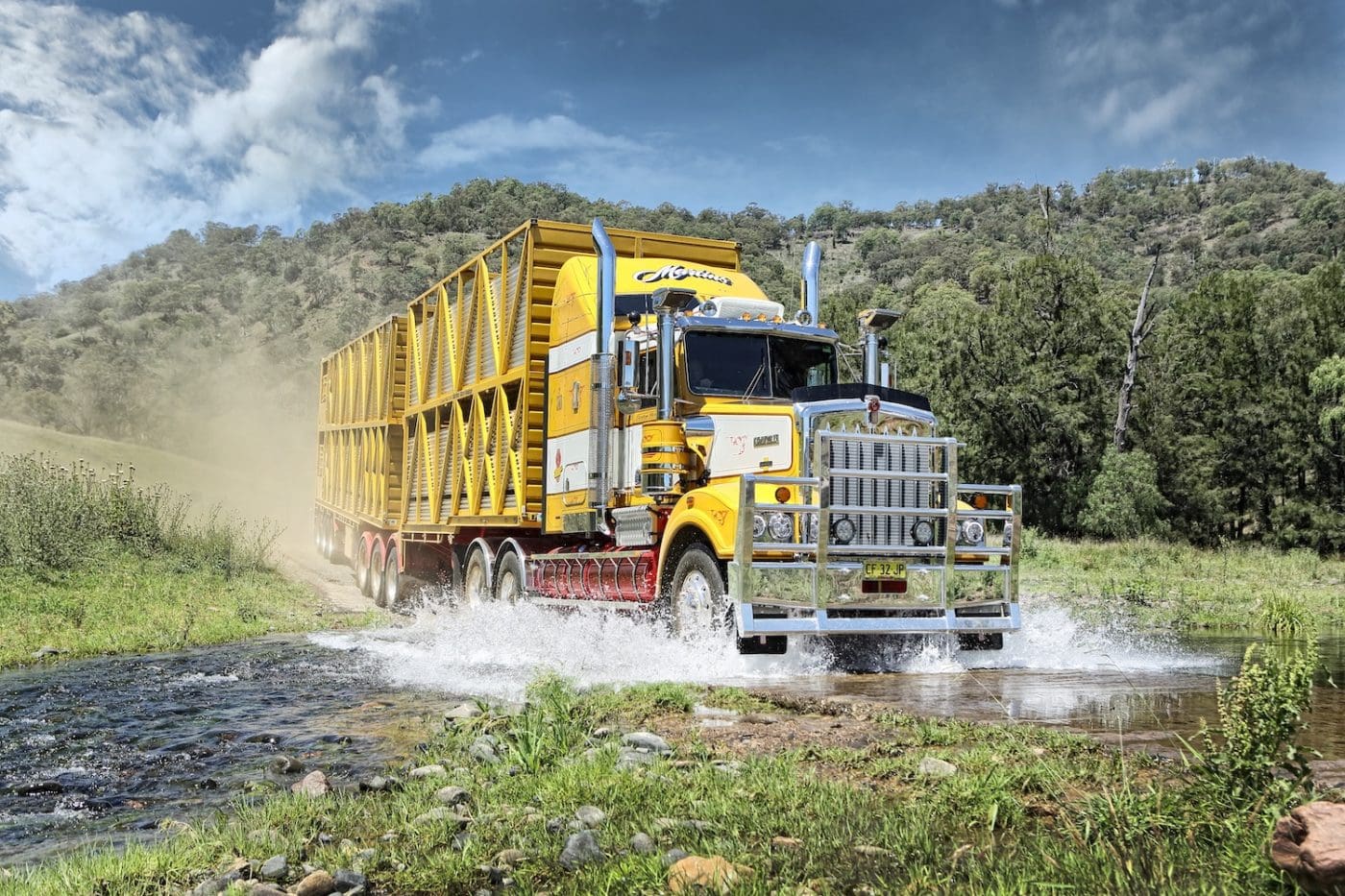
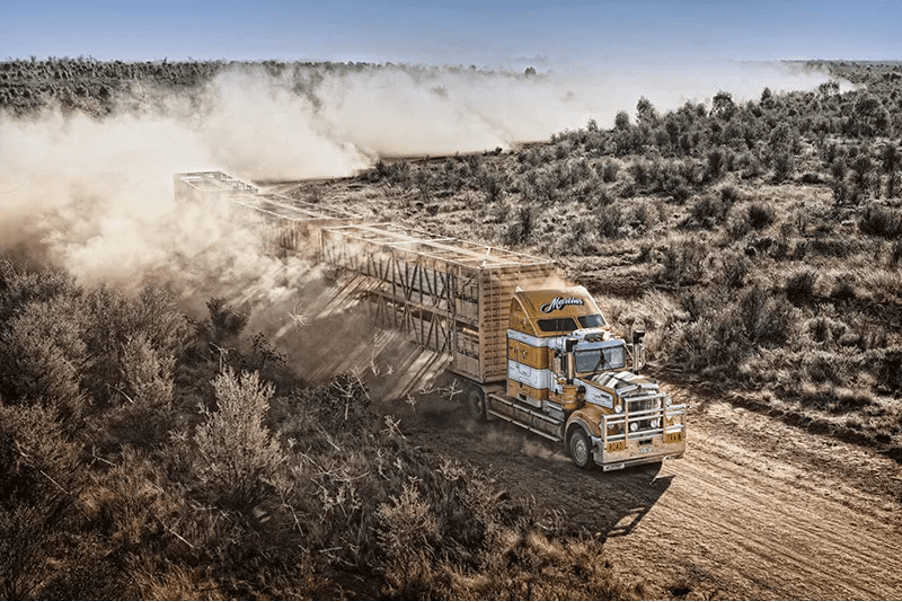
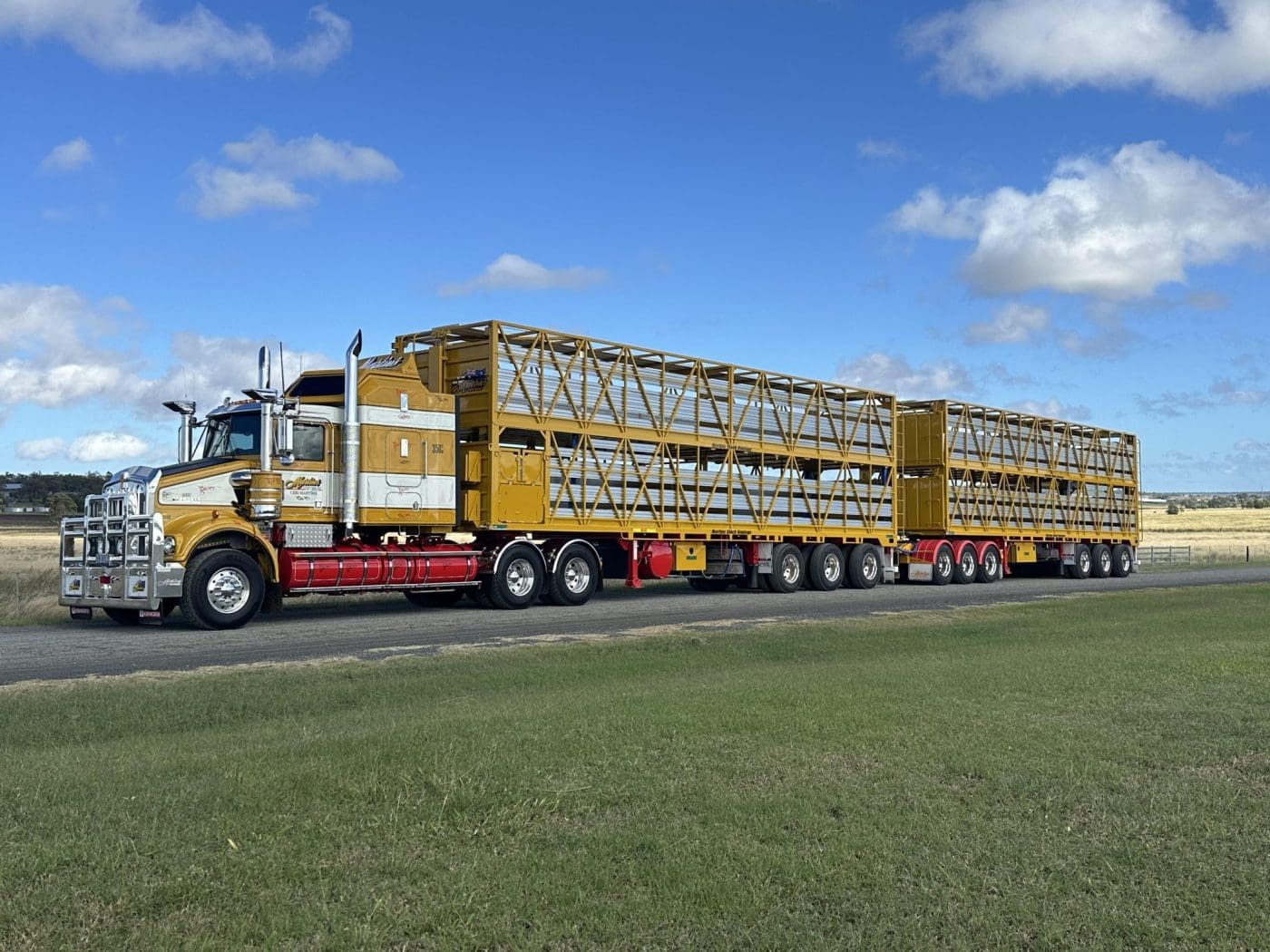
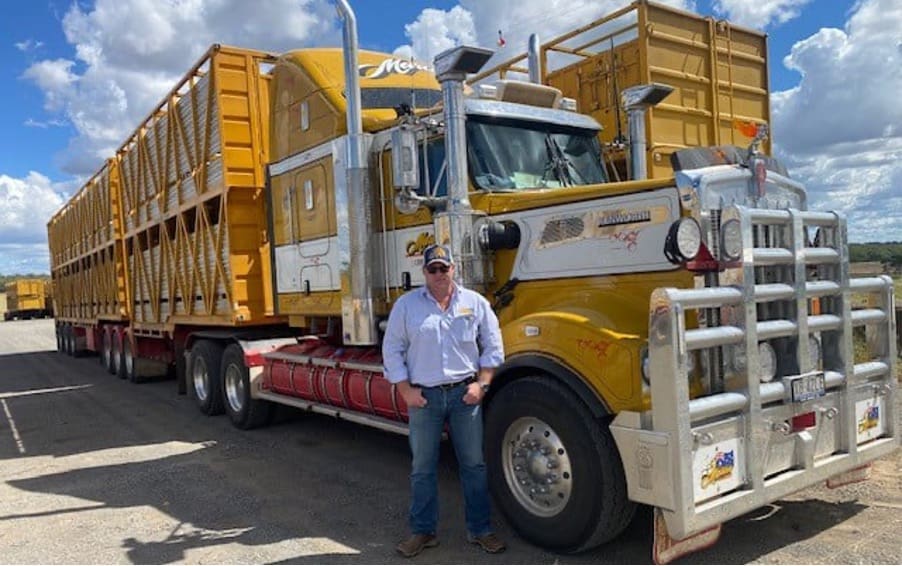

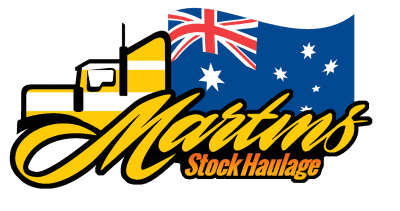
Congratulations to Martin’s Stock Haulage and the Team – a great achievement.
It was nice to see the mention of Porter’s Transport in the story. Col Porter (now deceased), originally based out of Kingaroy, revolutionised stock transport in Australia. In the early 1990’s he introduced the first BDoubles to Queensland stock transport and the first stock crates with airbag suspension. The airbag suspension may have even been the first for stock crates in Australia? If not, he was certainly a very early pioneer. Many would remember the ‘bull sitting in the chair’ logo, with the “Cruising Without Bruising” tagline. Those ‘cattle coaches’ provided a much smoother ride for the stock.
Congratulations Beef Central, this series has been an enjoyable read – well done.